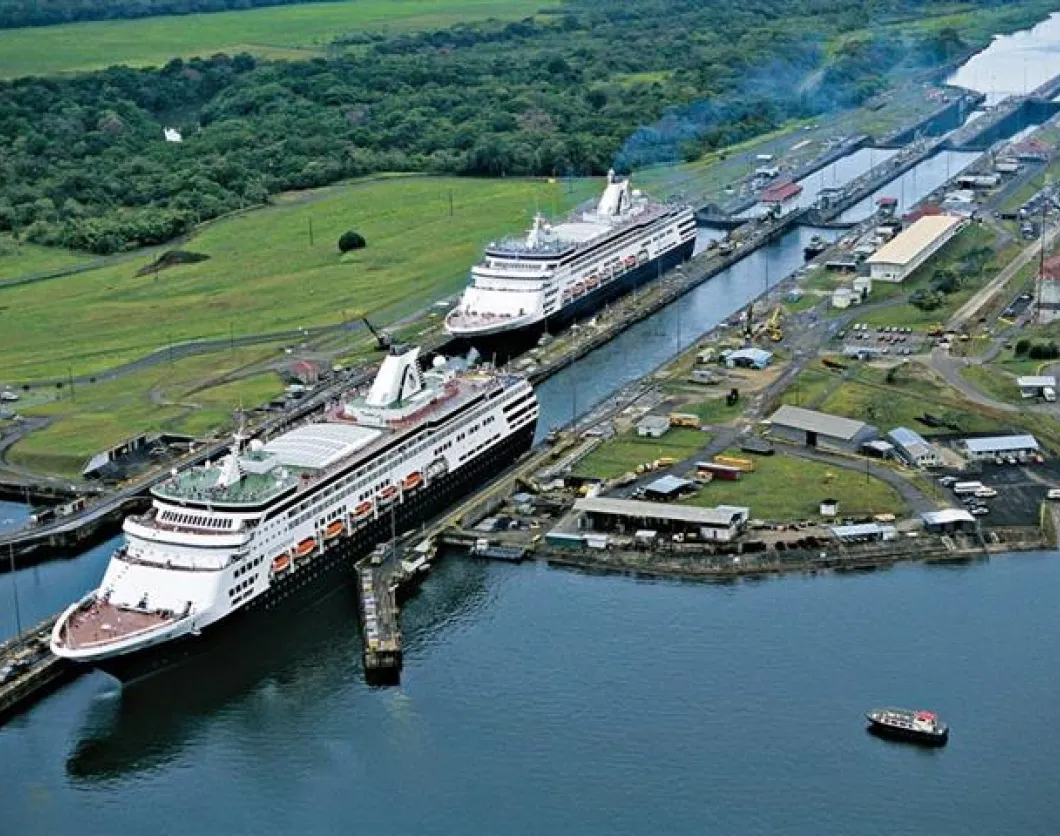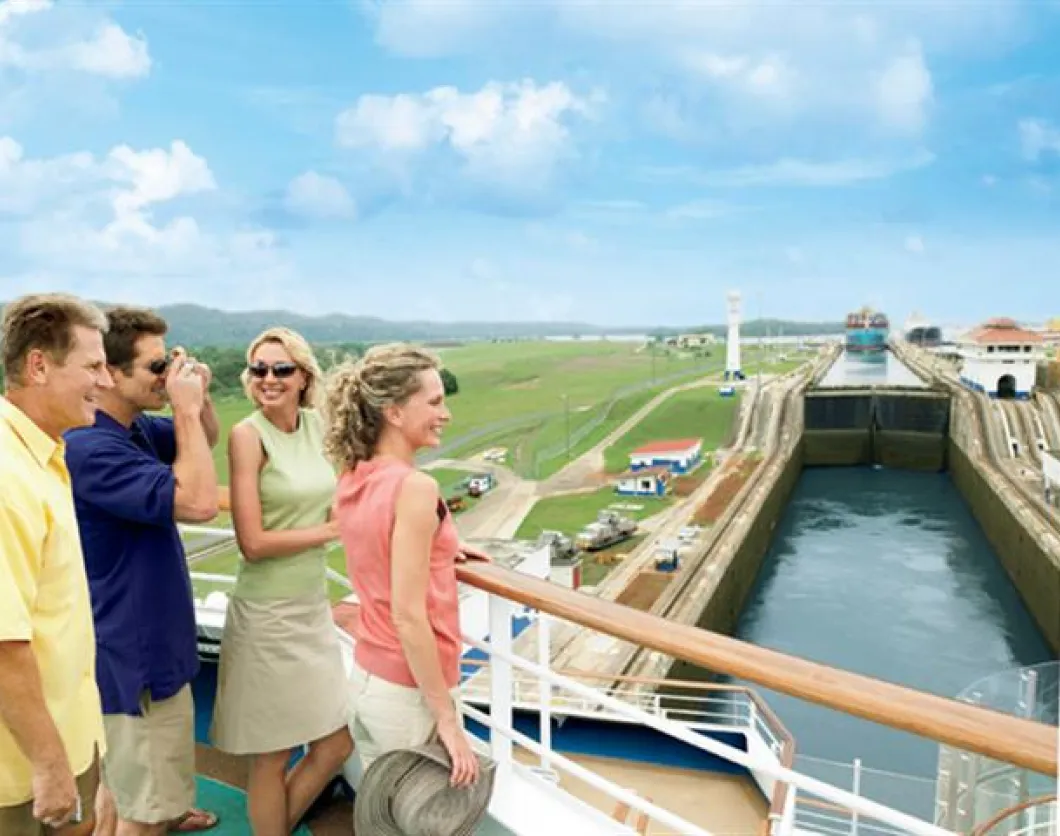The Panama Canal is both an engineering marvel and one of the most important waterways in the world. Seeing a big ship nudge its way through the narrow Panama Canal with the large tracts of jungle on both of its sides is really an unforgettable experience and sight.
It is 80km (49 miles) long and stretches from Panama City (located on the Pacific coast) to Colón (located on the Atlantic coast). The Panama Canal gives passage to approximately 14,000 ocean going vessels every year.
Exploring the Canal
The best and easiest way to tour the Panama Canal is to go to the Miraflores Locks that are located on the north eastern side of Panama City. There is a platform that offers visitors an excellent view to see how the locks operate. The center for visitors at Miraflores has a movie theater and a museum as well.
Although it is difficult to hitch a ride on a ship, pricey cruises and tours are readily available. They allow you to pass through the canal – the whole journey takes around nine hours.
Tourists should also visit the Panama Canal Interoceanic Museum in Casco Antiguo – enjoy some of the local delicacy and discover the charms of the walled city (the common name of this area). The walled city was founded in 1673 and was recognized as a historic site by UNESCO. Tourists can walk through the city's narrow streets and enjoy its beautiful neoclassical and colonial architecture, different monuments and squares.
Tourists can also go for a wildlife and nature tour by taking a boat trip on Gatun Lake, this is an exciting ecological expedition where they will enjoy the beautiful scenery and appreciate the amazing diversity of exotic tropical trees and plants, colorful birds and butterflies, and wild animals in their natural habitat, such as iguanas, sloths, white faced and howler monkeys.
History
Some said it could not be done. But in 1870, engineers, scientists, explorers and politicians set out to prove the critics wrong. They plunged themselves into the single costliest and largest engineering effort since the construction of the pyramids by the Egyptians.
The Panama Canal was constructed in 2 stages. The first stage of construction was between 1881 and 1888, by a French company that was headed by de Lessop, but they failed to complete the project. The reasons behind the failure of the French to complete the project were due to the inadequacy of their machinery and diseases spread by mosquitoes (chiefly yellow fever). The second stage of construction was done between 1904 and 1914 by the Americans who completed the project. The Panama Canal was officially opened on August 15, 1914 by the passing of the SS Ancon. This year, 2014, we are celebrating the 100th anniversary of the canal.
The Expansion Project
The ships for which the Panama Canal was designed are long gone. Modern shipping has led to an increase in the size of ships. The increase in the tonnage that the ships can carry has caused a lot of problems for the canal, since it can only accommodate ships with a carrying capacity of up to 65,000 tons. Some of the modern ships can carry 300,000 tons of cargo.
In September 2007, the Panama Canal Authority began a project that consisted of blasting an access channel to a new set of larger locks and dredging of the existing canal. The access channel will be parallel to the Miraflores Lake, but it will be 9 meters higher.
The Panama Canal Authority awarded the contract of building the locks to an international consortium that is led by Spain's Sacyr Vallehermoso. The project consists of building locks that are 40% longer and 60% wider and, they'll be able to handle nearly all of the ships in the world. The international consortium won the contract partly due to its new and innovative rolling lock gates that slide into a side chamber; this makes the work of maintaining the locks easier. The entire project was expected to be finished in 2014 at a total cost of $5.25 billion. However there have been delays and the project is expected to be completed in 2015.
Economic Importance
Not only is the Panama Canal vitally important to Panama for jobs and income, but it also plays an important economic role in world trade since it is used in the transport of cargo between the Pacific and the Atlantic Ocean. It plays an important role in the economy of the Caribbean countries since they are located at the intersection of north-south and east-west shipping routes. The Panama Canal is also important to the economy of the United States since over 10 percent of all U.S. shipping goes through the canal.











